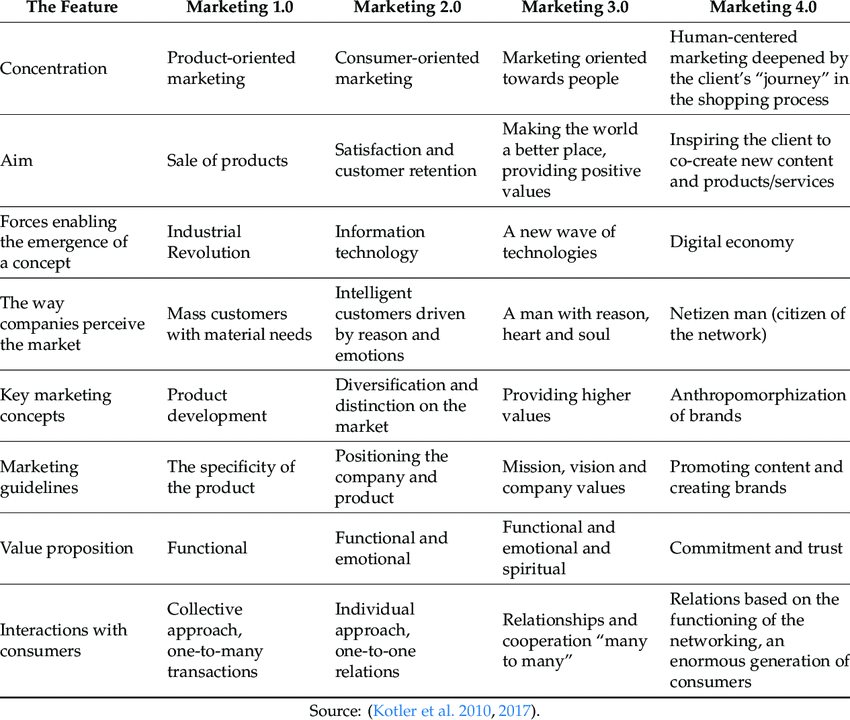Two main factors can be considered as how marketing has evolved: marketing technology and consumer needs.
- The first factor — technology — began developing with illustrated print advertisements as these were the only effective communication channels. However, the emergence of digital marketing has significantly changed the industry paradigm;
- The second factor — consumer needs — is constant and variable simultaneously. Companies create marketing strategies to appeal to consumers and their needs, but those needs can change rapidly.
How Marketing has evolved over time

- Marketing 1.0 — a practice that is focused on products. The main idea is to highlight the features and benefits of the product and convince a potential consumer to make a purchase decision;
- Marketing 2.0 — a customer-oriented approach. This stage of marketing evolution is closer to what we perceive as marketing today since it shifts the focus to customer needs;
- Marketing 3.0 — a human-centric marketing approach. Although it may resemble the previous stage, there’s a significant difference. This stage is more about transforming a company to reflect human values;
- Marketing 4.0 — the transition from traditional to digital marketing techniques. Brands become closer to their consumers while technologies bring about changes in power dynamics and a new type of customer.
- Marketing 5.0 – refers to applying technologies that are shaped to create, communicate, and enhance value throughout the customer journey.
Components of Marketing 5.0
According to Kotler, technology is adding value to marketing through five components:
- Data-driven marketing;
- Predictive marketing;
- Contextual marketing;
- Augmented marketing;
- Agile marketing.
Data-driven marketing can be considered a basis for any decision-making process. It is about collecting and analyzing big data to create optimized marketing solutions, just like most business decisions are made nowadays.
Predictive marketing is a bit different. This component is more about using predictive analytics to make marketing forecasts. This marketing approach effectively saves time and costs for the companies as they can create a potential market model and act accordingly.
Contextual marketing is one of those things that can be viewed as the backbone of modern marketing. The technologies applied in contextual marketing are all about analyzing the physical and informational surroundings of the consumer through the available interfaces of gadgets.
Augmented marketing uses technologies to provide marketers with instruments that improve customer interactions. Think of chatbots and virtual assistants. This technology provides customers with meaningful support generated via the digital interface. Agile marketing is more of the organizational component of Marketing 5.0. Agile marketing is all about engaging highly flexible and functional teams of professionals who can react to internal and external environments to create highly effective marketing campaigns. Organizational agility is one of the staple components of any modern enterprise today.
Follow Nitin Kr Saxena
Professor of Marketing & an esteemed alumnus of IIM Ahmedabad, Dr. Saxena holds a Ph.D. in Brand Management, which garnered him the prestigious Best Ph.D. Thesis award. Recognized for his exceptional contributions to academia, Dr. Saxena has been honored with the Young Faculty by CEGR. Additionally, he received the “Best Professor in Marketing Analytics” award.